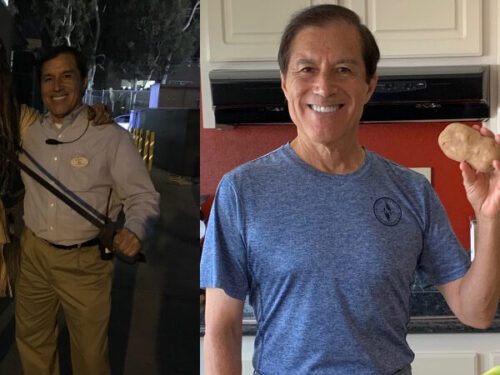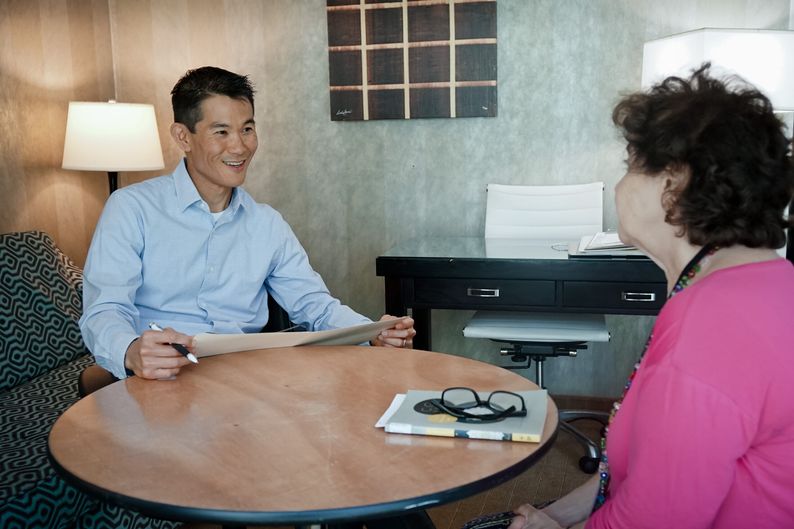Andrew: Recovered from Severe Ulcerative Colitis
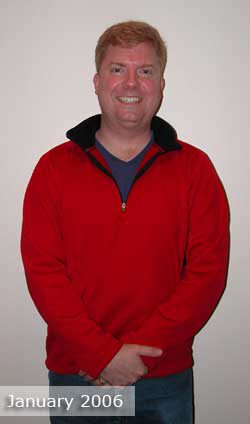
“99 out of 100 people in your condition would have died by now.” These are words that you never want to hear from your doctor, let alone when you’re only 35. It was April 26, 1999, and I had just been released from the hospital. Earlier that month, I had to be carried into the hospital after collapsing at home with severe ulcerative colitis, and there I would stay for three and a half weeks. My doctor and his team of nurses tried every pharmaceutical option available to them as my condition entered a vicious repetitive cycle of mild improvement followed by a sudden worsening over and over again. I was on an IV the entire time to keep me hydrated and to administer the cocktail of drugs prescribed by my doctor as he fought to save me. My immune system was crumbling, reaching its worst one night when I awoke in a fever and the nurse came in to check on me. I could see the horror on her face that told me instantly how grave my condition had become as I now had both viral and bacterial infections ravaging in my body. How did I ever end up like this at such a young age?
I first started experiencing symptoms of ulcerative colitis in the summer of 1998 when I was working as a management consultant for PricewaterhouseCoopers. Every week on Sunday night, I would take the red eye from San Francisco to Philadelphia, arrive at six in the morning, go to my corporate apartment to sleep for an hour, and then head off to a 12 to 16 hour work day as an instructor training newly hired consultants. You can imagine the embarrassment as the first signs of colitis began to show. I often found myself standing in front of a classroom of 75 people and having to go to the bathroom RIGHT NOW in the middle of a lecture, only to have to go again RIGHT NOW just a few minutes later. My publicly unsustainable behavior continued for several weeks as I struggled to maintain my bi-coastal workload.
One time on a flight back from Philadelphia to San Francisco, I was wracked by a fever that frightened one of the stewards enough to ask if I was OK when he saw my greenish face as I headed to the cramped forward cabin toilet for the 5th time that hour. Once I crammed myself inside, there was a rude knocking at the door. When I finally came out, an older lady was impatiently waiting right outside the door. “You’re not the only one who needs to use the bathroom, you know!” I was too weak and ashamed to set her straight and tell her that I would love to not present such an obstacle to her. Frankly, I was so fed up with having to go to the bathroom so often that part of me almost agreed with her.
Beginning in the fall of 1998, I began my strange journey to find a cure, not to mention a diagnosis, for what was happening to me. The first doctor thought that I might have hemorrhoids, and had me kneel on the examining table while he tilted the table to an almost 45 degree angle. He then pumped air into my rectum so that he could better see inside to remove the (non-existent) hemorrhoids. The second doctor also looked into my rectum during an excruciating exam, announced that I had colitis, and left the room to make out a referral to a local gastroenterologist. I just had to see the instrument that he used to perform my exam, so I took a look under the blue cloth lying on the instrument tray. There, glinting in the fluorescent lights of the examination room was an 18-inch long chrome-plated rigid tube about a half-inch in diameter! I shuddered to think if I had known beforehand that the doctor was going to insert a steel pipe into my behind, I would have probably run screaming from the room!
I tell you these stories to illustrate how strange and how seemingly ridiculous the patient experience can be in search of a cure. When I finally got to the gastroenterologist, he quickly said that, yes, I did indeed have ulcerative colitis, and prescribed an anti-inflammatory pill, called Asacol. My symptoms cleared up miraculously! I stayed on this medication for a few months and then I asked my doctor if I could go off of the medication. I was still young and the thought of taking any medication long-term was foreign to me.
It was now February 1999, I was off my meds, and I felt good. I can still remember the last Sunday when I was still healthy that year; I was playing with our friends’ three-year-old son, and he kept putting his fingers in my mouth. Maybe that’s how I got sick with flu; I am sure my immune system was already in decline by that point. I was still eating meat and I especially enjoyed a large coffee every morning with a generous pour of half-and-half. Cheese was another favorite comfort food. I had no clue of the way these foods were damaging my body. When I went to work on a client site near Sacramento, California, in March 1999, I started having fevers again and couldn’t work. I thought that I just needed rest.
After a week I felt marginally better, so I made the decision to drive the 100 miles back to my home in the Bay Area and sleep in my own bed. Navigating Friday night traffic on the I-80 while drenched in a feverish sweat was probably a foolhardy decision, but I just wanted to be home. I spent another week in bed with fevers, naively thinking that I was getting better. Finally, on the morning of April 1, 1999, I collapsed from exhaustion on the floor of my bathroom. I couldn’t move as my wife frantically called my gastroenterologist and asked what to do. He immediately told her to get me to the nearest emergency room. This began the last steps of my strange journey into the modern American medical system, at its best and its worst.
For the most part of my three and a half weeks in the hospital, dedicated professionals cared for me with compassion and skill. Then there were the others, the ones who made me pray for a time when I could be healthier and be free from depending on others for my state of health. There was the lab technician who laughed when I asked for a lead shield for my groin when I was X-rayed to see if I had an unappetizing condition called toxic mega-colon (I did not). He said, “It’s not like you’re going to have any kids,” based, I assume, on the likelihood of my recovery. There was the weekend nurse who poked and prodded my arm for 15 minutes with a needle trying to get my IV inserted. I finally had to tell her to leave the room and get the head nurse. Then there was the colostomy doctor who appeared in my room one afternoon, looked at my abdomen, told me I’d have to have my large intestine cut out, and have a permanent small hole in my belly where a plastic bag would be attached to collect my feces. He then turned on his heel and left the room – a consultation lasting all of 3 minutes that would affect my health and sense of well being for the rest of my life.
I did make it out of the hospital eventually, but not before being put on an aggressive, long-term pharmaceutical regimen. I was now taking one powerful anti-cancer medications (mercaptopurine), and two very powerful immune system suppressing medications (Remicade and cyclosporine). My treatment was so aggressive because it had to be in my dire condition. I had come uncomfortably close to death and my gastroenterologist needed to intervene with every tool he had available to him, even if the drugs he was using sent my blood pressure skyrocketing (there was a period it measured 200/150!), forcing me to take Ramipril as well.
I’ve told you up to now about my medical journey back to health, but what about my dietary journey? It too, is fraught with bumps and detours and reversals. My wife and I first participated in the 10-day McDougall Program in January 2006. Initially, I was shocked to see people in the class who had been in prior McDougall Programs, lapsed into old unhealthy eating habits, and then came back to the Program to get back on track. I remember thinking, “How could these people start eating meat or dairy after being in THIS class for 10 days with Dr. McDougall showing again and again how bad a non-plant based diet can be?” Well, I soon found out.
I was apprehensive about returning to the outside world after being in the safe, organized enclave of the McDougall Program with its 3 prepared vegan meals a day. The hardest part was how to handle myself in group settings, especially when food plays an important part of socializing. My wife’s family is Filipino, I travel to Japan to visit friends and for work, and many of our friends in the Bay Area are Chinese. All three cultures put food at the center of any social gathering. I felt like I was cutting out a part of my life by eating the McDougall way. I made it almost 9 months of eating 100% vegan before I started sliding little by little. By early 2008, I was pretty much back to my former unhealthy eating habits. I had become that person who went from McDonald’s to McDougall and back to McDonald’s. I was ashamed, but not enough to change my ways.
Then, in March 2008, I was lying on the sofa when I felt a stabbing pain in my back. I went to lie down on my bed as the pain crept down to my groin. I had never felt anything as excruciating in my entire life. Once more, I found myself in my local emergency room pounding the mattress of my gurney in pain. I had kidney stones. As the nurse put me out with a dose of morphine, I wondered in the enveloping darkness what I had done to my body after being given a second chance at health. Once more, I recovered. Again, in January 2009, I went to the emergency room with a severe migraine. Again, I wondered why I didn’t take better care of myself. Again, I recovered. Again, back to the emergency room, this time for a migraine and then couple of weeks later for another kidney stone!
I was angry with myself and ashamed because I had been given multiple chances to repair myself, and each time I ignored those chances and kept eating pretty much like I used to before the McDougall Program.

Fortunately for me, my wife wanted to enroll in a special study weekend that Dr. McDougall held in March 2010. At first, I was not going to join her in Santa Rosa for the weekend because I was too embarrassed to face Dr. McDougall after being in his 10-day program, attending several special study weekends, and even joining him in Costa Rica a couple of summers ago. Was I a sham? Did I not really understand and respect what Dr. McDougall had told me repeatedly about the hazards of our modern high-fat, highly processed diet? Fortunately, I ultimately decided to join my wife for the weekend, and something wonderful happened: I had been looking at eating a plant-based diet in the wrong way. I had thought of a vegan diet in terms of subtraction (giving up dairy and meat) instead of addition (better health and more energy). Once I realized that one simple thing, it’s been surprisingly easy for me to adhere to a plant-based diet.
It’s been 11 years since I first became seriously ill, and I am feeling better than I ever have. I stayed on my colitis medications until March of 2010. Just last month (June 2010), I had a colonoscopy that showed me to be completely free of any signs of ulcerative colitis. When the pre-op nurse asked if I was taking any medications for colitis, and I said “No,” her eyes widened with amazement. That reaction alone made all the bumps in my path to where I am now fade into nothingness.
Andrew
Dr. McDougall’s Comments:
Ulcerative Colitis (UC) is an autoimmune disease (the body attacks itself) affecting primarily the large intestine, the colon. Crohn’s Disease (CD) is similar, and together they are referred to as inflammatory bowel diseases (IBD). These bowel diseases result in abdominal pain and bloody diarrhea. In practical terms, modern medicine fails patients with IBD for one primary reason: most practicing doctors refuse to consider the obvious connection with the diet and the bowels.
There has been a rapid increase in the incidence of Crohn’s disease and ulcerative colitis in developed countries, which has led investigators to believe IBD is due to the Western diet. Worldwide, IBD is more commonly found in populations living farthest from the equator, a trend that reflects patterns of consumption of animal foods (meat and dairy) at higher latitudes and starchy foods in those populations living nearer the equator. Research shows that patients with IBD are more likely to consume meat, milk, fat, and refined food, and less likely to consume fruits and vegetables. Patients with UC are likely to have symptoms induced by cow’s milk. A study involving UC patients in Japan found higher-fat diets were associated with two and a half times the risk of developing IBD. Even so-called “good fats,” like omega-3, olive oil, and other vegetable fats, increased the risk for developing these diseases. A study of 60 thousand people published in May of 2010 found more than three times the risk of IBD with higher protein, meat, and fish consumption.
Sulfur compounds may play an important role in the cause of IBD. Hydrogen sulfide is toxic to the cells of the colon. This substance is produced in the bowel by the action of bacteria on dietary sources of sulfur, more specifically, sulfur-containing amino acids. Animal products are the main sources of these kinds of amino acids. Beef contains four times more sulfur than pinto beans, cheddar cheese contains five times more than white potatoes, and tuna contains twelve times more than sweet potatoes.
One of the first published studies of patients with CD found two-thirds of patients treated with a healthful diet were well after two years. In one recent controlled study involving ninety-three CD patients, 84 percent achieved remission after two weeks of following an elimination diet. Predominant food intolerances discovered during this study were cereals, dairy products, and yeast.
Crohn’s disease patients suffering from severe diarrhea (twenty or more stools per day) find relief from watery stools within two to three days when they are switched from a high-fat to a low-fat diet. The reason for this almost overnight relief is that patients with CD have often suffered damage to the last part of their small intestine (ilium). As a result of this damage, bile from the liver that is normally reabsorbed by a healthy small intestine is instead allowed to pass directly into the large intestine. Here the bile acid causes severe irritation, causing a discharge of blood, mucus, and water.
In summary, for the prevention and treatment of IBD your diet should avoid all kinds of added fats, oils and animal foods. Your prime source of calories needs to come from starches, such as potatoes, sweet potatoes, winter squashes, beans, and rice. For my patients with IBD I recommend that they start with the regular McDougall Diet without wheat and soy products. If dramatic improvement is not seen over the next four weeks then I suggest they try the elimination diet, which is based on sweet potatoes, brown rice, green and yellow vegetables, and non-citrus fruits (all thoroughly cooked).
For scientific reference to the materials above see the book Dr. McDougall’s Digestive Tune-up.
Recommended Articles
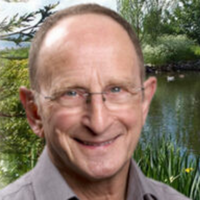
Syd Wyemann: My Hands Were Crippled With Arthritis
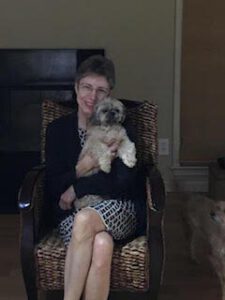
Claudia Dealmeida: Had Debilitating Migraines, Now Pain Free
